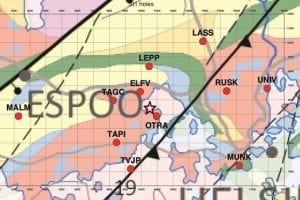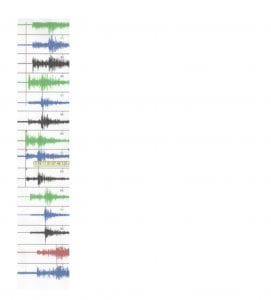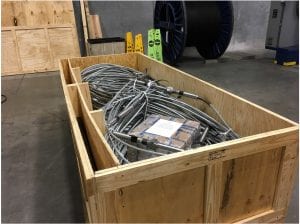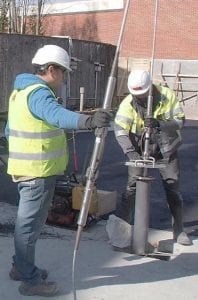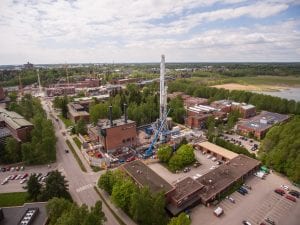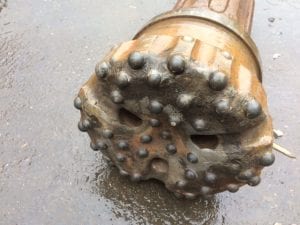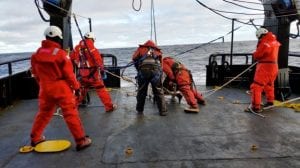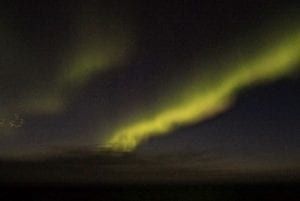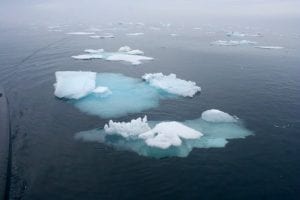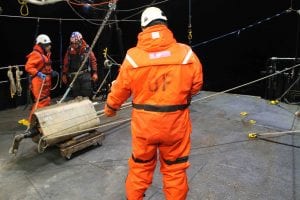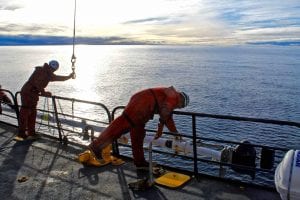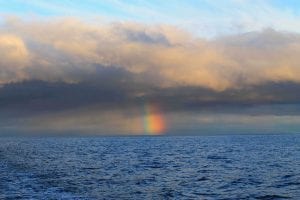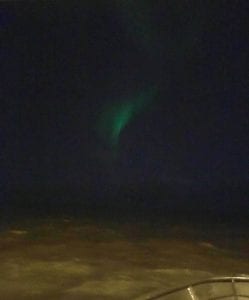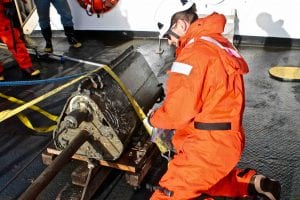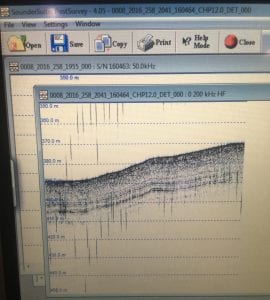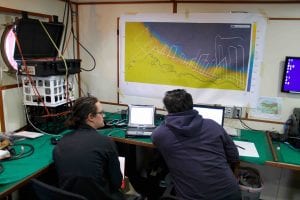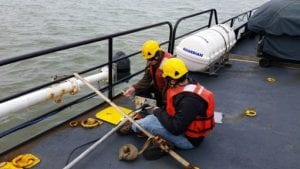By Peter Malin, SMU Adjunct Faculty
Peter Malin, an Adjunct Faculty in the SMU Huffington Department of Earth Sciences, provided this update on the st1 Deep Heat project in Espoo, Finland. Peter’s company Advanced Seismic Instrumentation & Research (ASIR) is providing seismic monitoring for the project.
Stimulation of the OTN III well at the st1 Deep Heat project in Espoo, Finland has officially ended. No Red-level alerts of M>2.1 occurred during the 6 weeks of stimulation during which 18,000 cubic meters of water were injected at depths of 5+ km. The well is now shut in while monitoring continues. Below are some graphs of the seismic events recorded during stimulation, and a press release from st1.


Press Release
Geothermal Pilot Project makes progress in Otaniemi, Finland
Stimulation stage of St1’s geothermal project successfully completed
One of the most challenging aspects of St1’s geothermal project, the water-pressure opening (stimulation) of closed rock fractures, has now been completed at Otaniemi. The stimulation was also used to investigate water flow in the deep rock by tracking the micro-vibration bursts it normally produces. By pumping water into the existing 6.0 km-deep supply well in highly controlled cycles, these vibration bursts were kept within the limits predefined by Finnish environmental authorities. Analysis of the results, which will take 5–7 months, will be the next step and will determine how the project will continue.
The planned geothermal heat plant in Otaniemi could fulfil up to 10 percent of district heating demand with emission-free energy in the Espoo area.
”The stimulation test proved that water can be pumped into Finland’s tough granite bedrock and be made to flow through the rock. The controlled stimulation technology we opted for, and the pinpointing of the appropriate fracture zones, proved to work and the bedrock behaved as we had expected,” says Tero Saarno, Production Director at St1 Deep Heat.
A prerequisite for emission-free geothermal heat production is getting water to flow between two boreholes at a depth of several kilometres. Inducing micro-vibration bursts by water injection into the deep bedrock is thus an essential aspect of geothermal heat plant construction. In fact, because of the unusual depth of the Otaniemi project, it is the only way to study the water flow needed for sustainable-heat production. It also allows for accurately determining the drilling path for a production borehole, which is needed to bring up the injected water.
Stimulation monitored by authorities – vibration bursts heard in neighboring areas
During the stimulation stage, experts from St1 pumped water into the 6-km deep supply borehole, monitoring this process with underground geophones. These sensors were installed in boreholes in the bedrock, allowing them to see the thousands of micro-vibration bursts associated with the stimulation. The size limit for the micro-vibration bursts were specified in advance by Finnish environmental authorities, in this case to a much lower level than are common, for example, in blasting operations. In addition, the Institute of Seismology at the University of Helsinki used its own geophones to independently monitor the stimulation. To stay within mandated limits, the stimulation was performed in a controlled manner, and thereby ended up posing no danger to people or damage to buildings and their contents.
“Because the site is located in the Helsinki metropolitan area near housing and infrastructure, the magnitudes were set so low that the disturbing effects would probably remain minor. On site, the effects of stimulation were closely monitored and reacted to quickly when needed,” says seismologist Tommi Vuorinen of the Institute of Seismology.
The highest micro-vibration burst measured by the underground geophones during the water simulation test was a magnitude of M1.9. Ground motion sensors installed by an independent monitoring company showed this event did not lead to limit-exceeding movements in local building and critical facilities.
According to Tero Saarno, the only surprise during the stimulation phase was the noise nuisance caused by the more powerful micro-vibration bursts. The transmission of these bursts through the rock was a new finding, recorded for the first time with instruments to study their mechanisms. During the stimulation, they were audible as distant thunder and/or bangs, the largest causing thunder-like vibrations in certain areas.
“I hear for the first time such noises coming from such small micro-earthquakes, even though I have lived and worked most of my life in very active earthquake areas – including California, Hawaii, New Zealand and Turkey. It is exceptional that these sounds are even audible, as the sediment layers of the Earth normally absorb them. The unique measurements made by st1 opens up a whole new area of research, aimed at identifying their causes, and the potential effects of nearby bays and the uniqueness of Finnish bedrock, “says Peter E. Malin. Malin is a member of the project expert team, an R&D Director at the seismic monitoring company ASIR, and a Professor of Seismology at the German Geoscience Research Center in Potsdam.
“Local residents have provided us with valuable observations on the resulting noise,” says Saarno. “Mid-way through the stimulation, we also began acoustic measurements in the Laajalahti region and in Munkkiniemi. Based on the observations we received, instruments were installed in places such as the basement and roof of a house in Munkkiniemi. They were also installed in the clay layer of Pikku Huopalahti.
Internationally renowned Kalliotekniikka Consulting Engineers Oy were responsible for the ground-based sound and vibration measurement. The measurements were made at locations based on local residents’ observations. “These measurements showed the sound bursts and associated vibrations were not even close to the limits set for construction-blasting work,” explains Saarno. “The measured vibration levels on the ground were really small: only 1/100 of the actual level that could cause damage to the buildings. Also, noise measurements were clearly below the guidelines of the Ministry of Social Affairs and Health throughout the project, “says Vesa Holmström, Technical Manager in Kalliotekniikka.
Saarno also noted that, when finished, the geothermal plant will not cause further audible micro-sound bursts or vibrations.
Best international expertise in use
A team of 25 experts have been working in shifts around the clock during the stimulation phase at St1 Deep Heat’s Otaniemi construction site. The best international geothermal expertise and experience from previous projects was deployed.
“This is the first time that geothermal heat from these kinds of bedrock conditions has looked promising and economically viable. If successfully continued, the project represents a major opportunity for clean heat production and, significantly, further energy independence for Finland. It is rare for a private company to take this financial risk and begin solving the challenges posed by bedrock geothermal in a systematic and determined manner – it is a good example of modern Finnish sisu” says Director of Development Malin of ASIR. ” The Finnish pilot project is being followed with interest all around the world. If the project succeeds in Otaniemi, it will be duplicated elsewhere”.
The next step is the analysis of the micro-vibration burst measurements and the modelling of the heat reservoir response to cold water circulation. On this basis, a more precise idea will be formed of the direction in which to continue drilling an existing 3 km water-collection borehole to meet current 6 km water supply hole.
More information:
St1 Deep Heat Oy, Production Director Tero Saarno, +358 50 373 1923, tero.saarno@st1.fi
Project website www.st1.eu/geothermal-heat
St1 Nordic Oy is a Nordic energy group whose vision is to be the leading producer and seller of CO2-aware energy. The Group researches and develops economically viable, environmentally sustainable energy solutions. St1 focuses on fuels marketing activities, oil refining and renewable energy solutions such as waste-based advanced ethanol fuels and industrial wind power. The Group has 1400 St1 and Shell branded retail stations in Finland, Sweden and Norway. Headquartered in Helsinki, St1 employs currently more than 750 people. www.st1.eu





